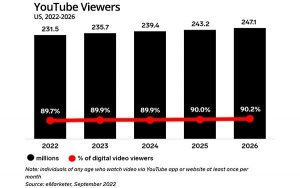In many ways the single biggest challenge in B2B sales today isn’t so much a selling problem as it is a buying problem. Today’s sales rep must deal with an increasing number of customer stakeholders involved in purchase decisions. While it’s the new reality – building consensus amongst an ever-increasing list of stakeholders – it’s, not a new challenge. We have been dealing with a dramatic rise in decision-makers and influencers for a while now.
In a recent poll of CEB members, nearly 80 percent of sales leaders report that the number of customer stakeholders involved in a typical deal continues to rise. The average B2B decision-making group includes 5.4 buyers. And salespeople need to get a “yes” from each of these stakeholders to be able to close a deal. In some cases, we don’t know who all of those stakeholders are or what they care about.
To make matters worse, these stakeholder groups are now more diverse than ever before. Seventy-five percent of respondents indicate that in any given purchase decision, the stakeholders involved come from a wide variety of roles, teams and locations. This means that each of the 5.4 people involved have different perspectives that we have to consider.
The Psychology of Persuasion
To put this into context, consider the following: if you sell IT solutions, you used to sell to the CIO and his or her team. But as most IT solutions today touch other parts of the business, your reps now have to sell to CMOs, COOs, Heads of HR, and more, depending on who’s using the system. Plus, the broader scope and bigger footprint of your solution probably means talking to the CFO, Procurement, and almost certainly legal. Each of these stakeholders is different from each other in terms of their priorities, goals, perspectives and even has different levels of knowledge about your proposed solution.
This is creating a greater level of uncertainty for customers when they’re faced with making purchase decisions. According to Dr. Robert Cialdini, author of the well-known book “Influence: The Psychology of Persuasion,” people exhibit several possible responses when faced with decisional uncertainty:
- Freezing—a reluctance to act or make a choice until the uncertainty is resolved
- Loss Aversion—a tendency to prefer choices designed to prevent losses over choices designed to obtain gains
- Heuristic Choices—when choices are made, they are based on a single, relevant factor rather than a set of relevant factors
Each of these responses leads to what we’ve come to call “buyer dysfunction,” the inability of a diverse buying group to agree on anything beyond the lowest common denominator of minimal change at minimal cost. Marked by divergent mental models, dysfunctional groups are unable to agree on little more than “avoid risk,” “move cautiously,” “reduce disruption,” and “save money.” And we all know what it feels like as a supplier to be on the receiving end of that kind of customer consensus.
So, what does this mean exactly for sales reps? Our research shows that coping with increasing consensus requirements is less about helping reps sell differently and more about helping your customers buy differently. At the end of the day, individuals who are part of a buying process need to connect with each other and agree on shared priorities and interests in order to address broad challenges and pursue big opportunities. It’s the inability of stakeholders to align on a problem to solve that leads decision groups to default to the basic common desire to either save their company money or avoid organizational risk.
We also found that buying groups that manage to create greater overlap in terms of individuals’ goals, priorities, means and metrics are more likely to interact in a functional manner and therefore purchase more ambitious offerings. So while stakeholders in dysfunctional buying groups have diverging mental models, stakeholders in functional buying groups have converging mental models.
Encouraging Convergence
This led us to ask, how can sales reps encourage convergence among otherwise diverse stakeholders? Specifically, we found that there are three things that can drive stakeholder alignment:
- A common language. Building communication bridges between stakeholders who speak IT or speak Marketing is crucial for identifying common objectives and creating greater overlap between stakeholders.
- Collective understanding of individual perspectives. Alignment will not be reached without ensuring that everyone understands not only what each stakeholder wants but why.
- Overcoming biases. Being open to consider new ideas requires abandoning both individual biases (e.g., my team is not agile enough for this change) and company biases (e.g., internally built solutions always meet our needs better).
In the end, much of our current work features a detailed examination of the specific steps sales and marketing can take to make those things happen in order to create a kind of purchase environment more conducive to growth. One where everyone involved in the purchase process learns from one another in order to establish common ground and collective expectations well beyond simply avoiding risk and saving money.
A version of this post originally appeared on CEB’s Sales & Service blog.
By Nick Toman and Brent Adamson
Business Articles | Business 2 Community
(277)








